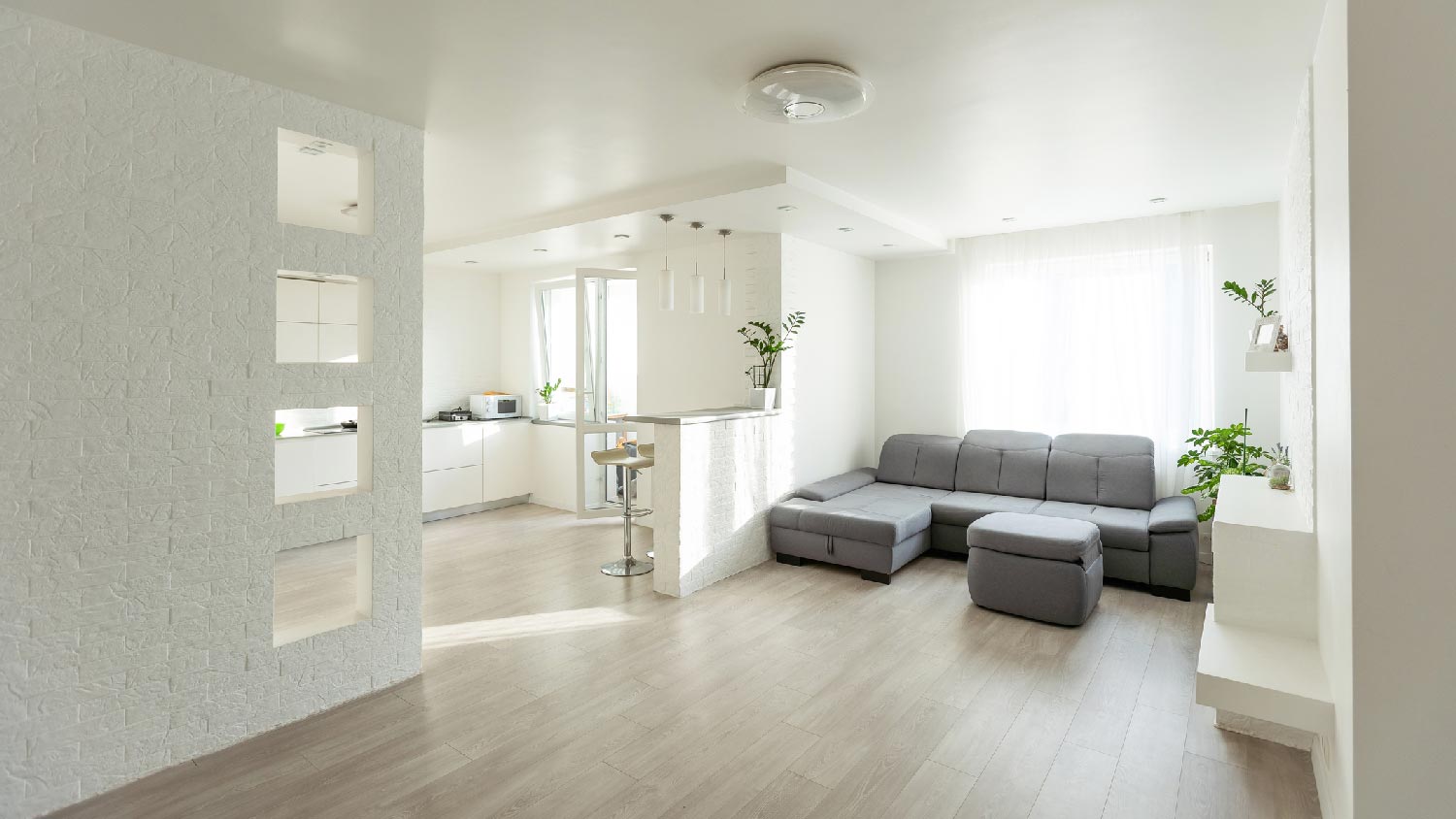
Popcorn ceiling removal costs depend on the size of your ceiling and any additional services like asbestos removal and resurfacing. Learn all the costs here.
Why you should sweat a sweating ceiling


Ceiling condensation can lead to mold, mildew, and serious health consequences.
If you notice condensation on a ceiling, poor ventilation that is trapping humid air in your home is likely to blame.
An undetected leak caused by a burst pipe or roof damage could also be to blame for condensation on a ceiling.
Depending on the cause of your wet ceiling, you will likely need to consult an HVAC pro to boost your home's ventilation or a plumber to stop a leak.
If you've noticed condensation on the ceiling, scenarios of mold, mildew, and water damage are likely swirling through your head as a homeowner. In addition to potentially harming both your home and health, condensation won't go away on its own. Here's what you need to know about the five common causes of condensation on your ceiling.

Runaway humidity levels can cause cold air to condense on ceilings. If left unchecked, high humidity can make your walls and ceiling look like they're "sweating." Ideally, humidity levels in your home should be between 30% and 50%. In nearly all cases, reducing humidity is the first step in stopping condensation on ceilings.
To address high humidity, start with a hygrometer that measures humidity levels inside your home. These are widely available at hardware stores. Some ways to keep humidity low include opening windows and doors when showering and cooking, cleaning your vents regularly, hanging laundry outdoors instead of indoors, and running an exhaust fan after cooking. If these smaller efforts aren't making a difference, speak with an HVAC pro about installing a dehumidifier.
There's a surprising downside to having a newer, energy-efficient home. The airtight builds of today, which help to keep heated or cooled air inside our homes to reduce energy bills and waste, can also trap moisture inside. Unfortunately, this can lead to condensation and mold if proper ventilation isn't available.
How do you know if condensation on your ceiling is caused by poor ventilation? In most cases, you can simply walk around your home to feel for "stuffy" rooms or areas. In many homes, this is the bathroom or area around the stove in the kitchen. For a short-term fix, opening windows after taking a hot shower or cooking can help to ventilate your home. For the long term, talk with an HVAC pro about updating your system for better circulation. Something as simple as an exhaust fan leading out of your basement may stop condensation from forming.

Wetness in your ceiling could be caused by a leak you've missed. As one of the most common sagging ceiling causes and problems behind different types of ceiling cracks, a small, slow leak can stay hidden for months or years. Common culprits can include roof leaks, burst pipes, or broken flashing around your home. With broken roof tiles or compromised fascia boards often causing leaks, annual roofing inspections are so important.
If unexplained ceiling condensation doesn't seem to be resolving with improved ventilation, consider having your roof inspected for damage that could be behind leaking water into your ceiling. If you suspect a pipe may be to blame, bring in a plumber who knows how to fix a ceiling leak to listen for leaks or use video equipment in your pipes. One telltale sign that a leak is to blame for condensation is an unexplained increase in your water usage reflected in your monthly bill.
While a home that's too airtight can cause condensation by trapping moisture inside, a poorly sealed home also comes with its own risks for condensation. The test is relatively simple. If you can feel air pushing out through doors and windows, moisture is also finding a way to push in. To ensure your home is protected against humidity intrusions, beef up your weatherstripping and confirm that insulation is properly placed at the corners of window frames and doorways.
While it may seem like a tall tale, having a high number of plants in your home can actually inflate your humidity levels. It has to do with the way plants release moisture as vapor into the air. While a fern or two probably won't cause problems, having multiple plants in a small, enclosed space can actually create condensation issues.
If you notice condensation on your ceiling, have your roof inspected right away to check for exterior damage that's causing a leak. If the roof is clear, your attic's ventilation may need to be inspected. If you can't determine a root cause, call a ceiling repair company near you to take a look at the damage to help you determine where the moisture is coming from. A ceiling repair pro can also patch or replace the portion of the ceiling that's been damaged by water or humidity. On average, ceiling repair cost ranges from $150 to $4,500.
From average costs to expert advice, get all the answers you need to get your job done.

Popcorn ceiling removal costs depend on the size of your ceiling and any additional services like asbestos removal and resurfacing. Learn all the costs here.

A ceiling repair averages about $1,000, but multiple factors affect this number. Learn more about creating an accurate ceiling repair cost estimate with our tips.

Venetian plaster can add depth and texture to your aesthetic. Learn how much Venetian plaster costs based on factors like square footage and whether you hire a pro to help.

Want to hang up a new piece of art or mount a TV on your plaster walls? First, you’ll need to learn how to find a stud in a plaster wall. Here are four methods.

Tired of looking at the crack down the wall? Plaster can be tricky to work with, but you can learn how to fix cracks in plaster walls with this guide.

Find out what causes ceiling cracks, including general wear and tear, water damage, roof truss uplift, and issues with your foundation.